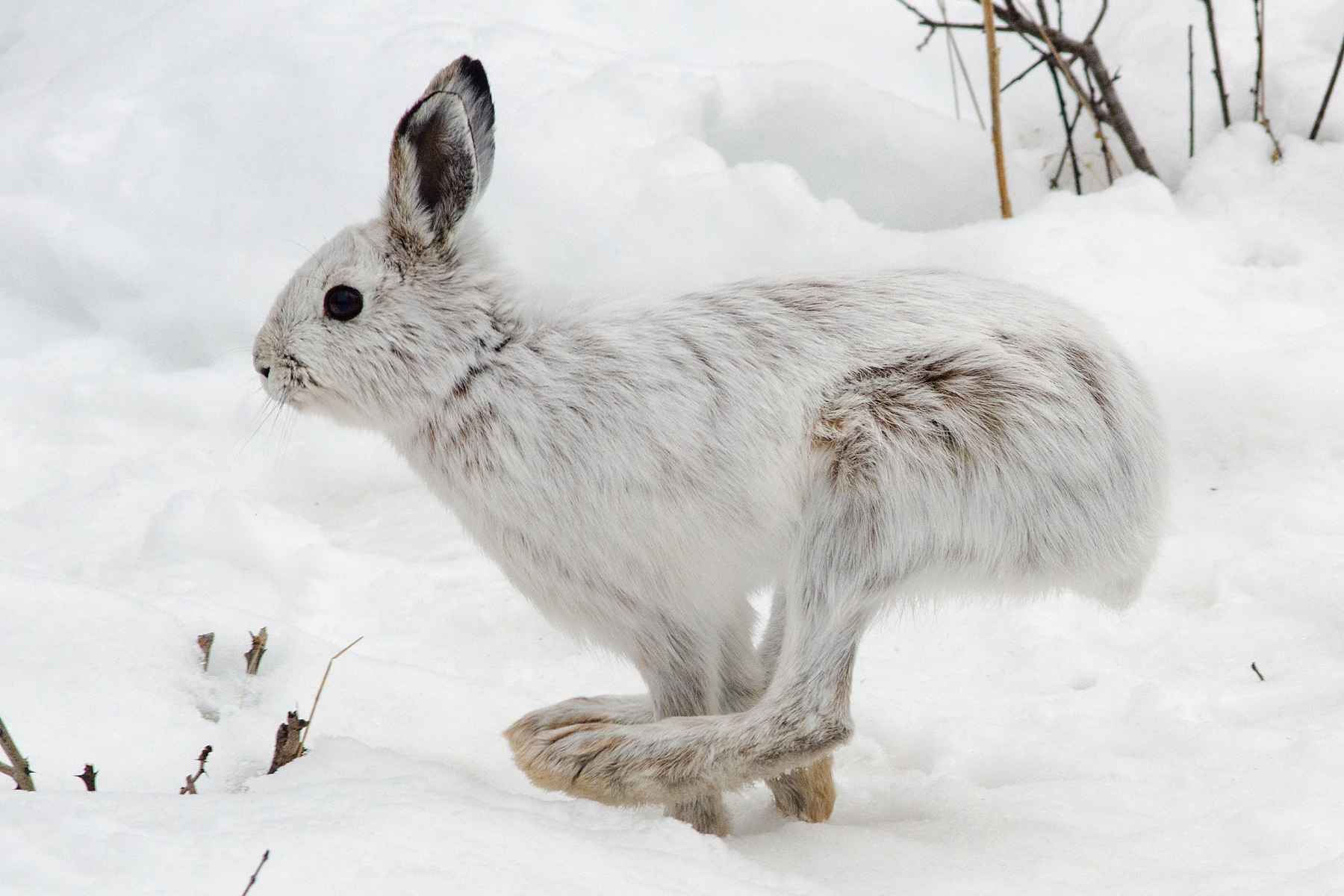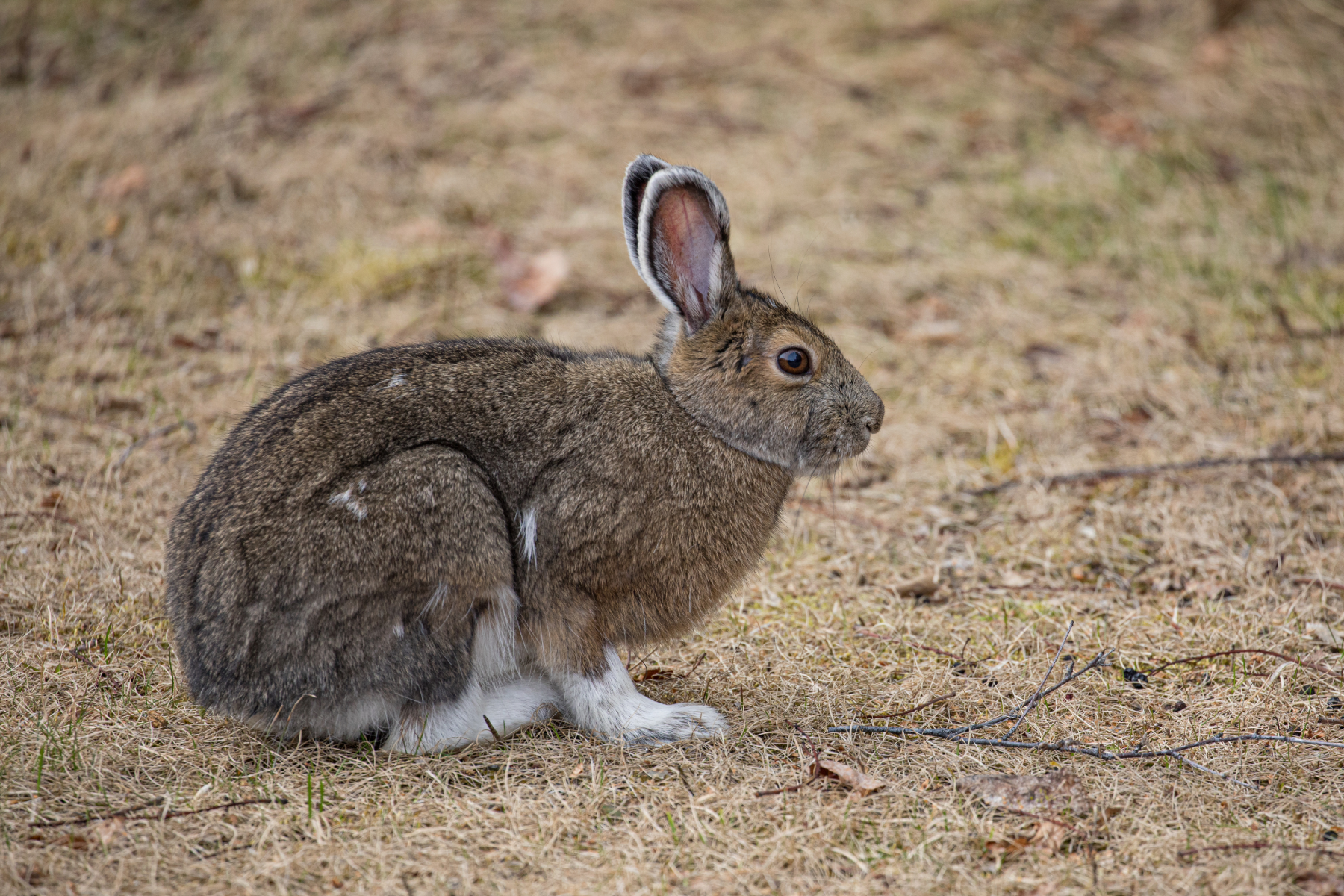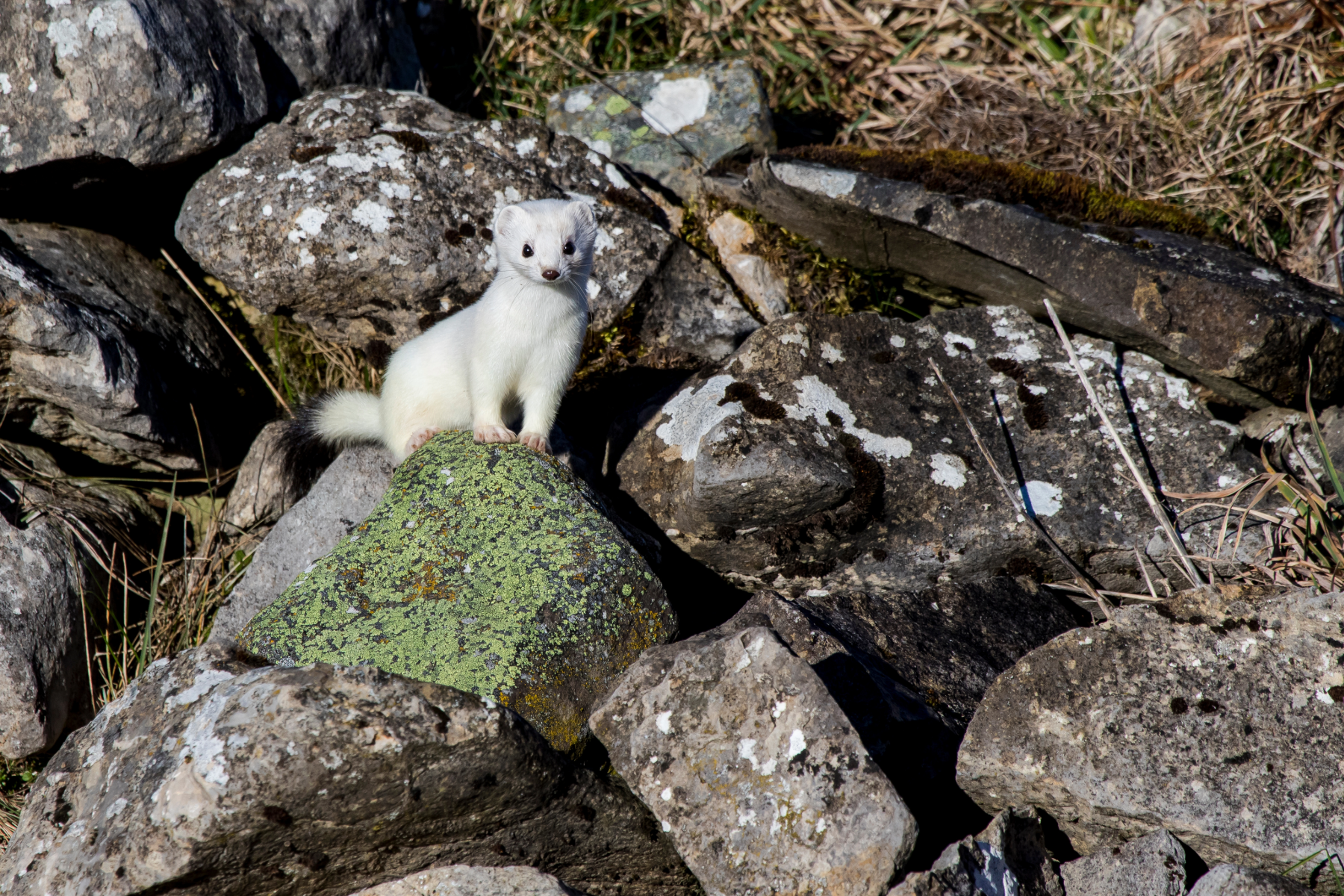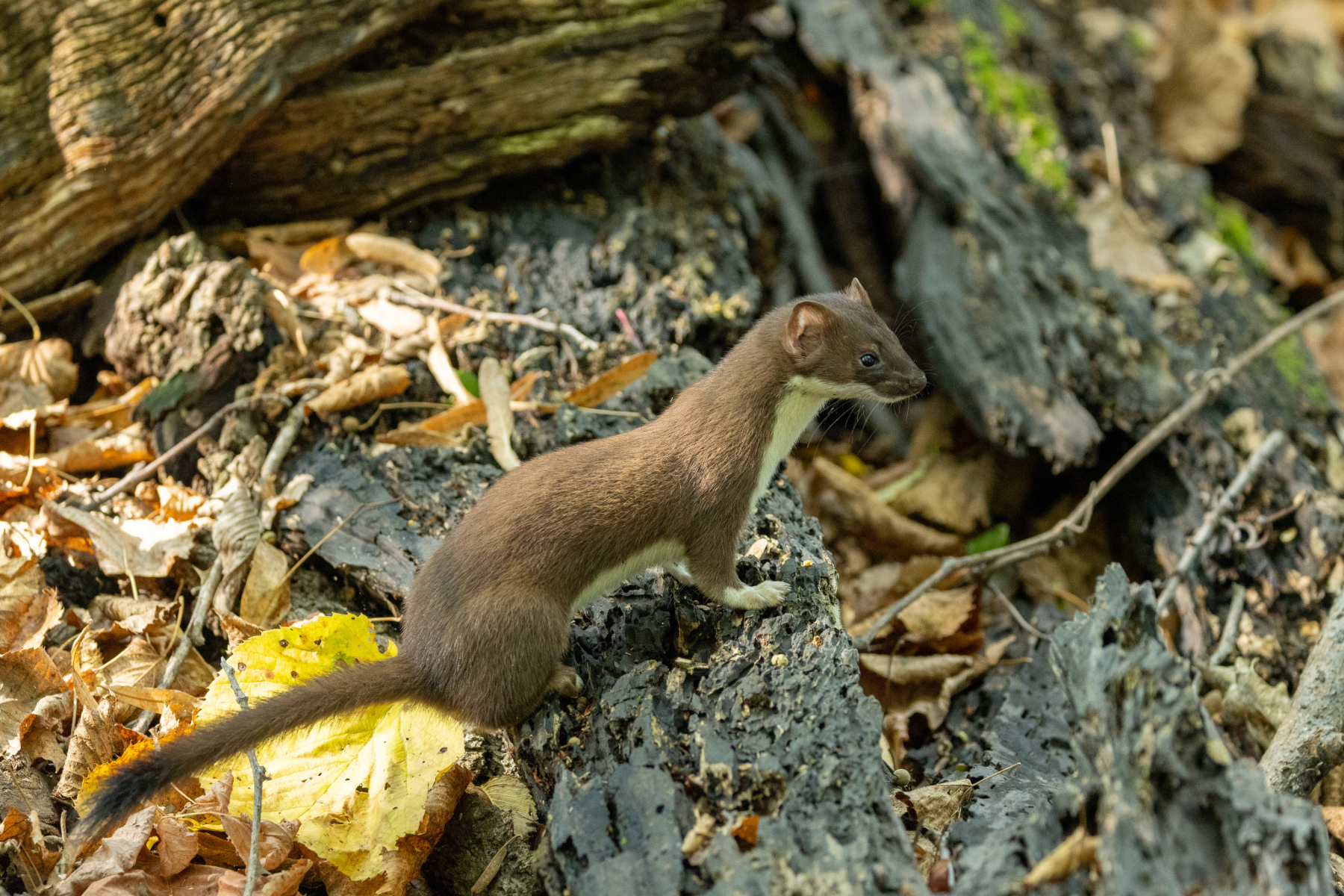Q: Which Lake Champlain Basin animals turn white in the winter?
A: Three species that reside year-round in the Lake Champlain basin have a unique adaptation that improves their odds of survival through the cold months of winter. The snowshoe hare, short-tailed weasel, and long-tailed weasel are all able to turn their fur coats white, allowing them to effectively disappear from sight while roaming the snow-covered ground in search of food and shelter.
Snowshoe Hare
The snowshoe hare is often mistakenly referred to as a rabbit, and while they share some characteristics the two species are distinguished by several characteristics. Hares tend to be larger than rabbits, with longer ears and hind legs. They typically lead solitary or paired lives, while rabbits opt for a more communal lifestyle. Another major distinction specifically between the snowshoe hare and the cottontail rabbit (for which it is frequently confused) is the snowshoe hare’s ability to turn white in winter.
The white winter coat is a trait specific to snowshoe hares living in areas with prolonged winter snow cover and is triggered by changes in daylight. As the days grow shorter throughout the fall, the transition from a brown to white coat begins. However, response to day length is not the only factor determining the annual shift.
In a 2018 study, researchers at the University of Montana discovered that the specific color of a snowshoe hare’s winter coat is determined by genetic variation. Through evolutionary processes, that genetic variation is shaped by the presence or absence of winter snow cover. This helps explain why snowshoe hares living in snowy places molt to a white winter coat, while individuals of the exact same species that live in an area of low to no snow cover will retain their brown coat year-round.
When researchers investigated the variable gene in related species, they found that the brown version of the gene originated from a period during which the snowshoe hare interbred with the black-tail jackrabbit—a species that retains a brown coat through the winter. This process of gene-sharing through interbreeding is called hybridization, a process responsible for many present-day domesticated species (like dogs and cats), but also one that provides the genetic variation needed to adapt to various kinds of wild environments.
While a white winter coat protects the snowshoe hare from predation while moving across snow-covered ground, it becomes a liability if the snow cover decreases. Imagine a bright white hare moving through a brown field: easy prey for a hungry coyote, fox, fisher, or great horned owl.
Hybridization is of particular interest to researchers seeking to understand how species like the snowshoe hare will adapt to a changing climate and decreasing snow cover. Genetic variation may allow the snowshoe hare to rapidly evolve, meeting changing conditions and ensuring survival.
Short-Tailed Weasel and Long-Tailed Weasel
The short-tailed weasel and long-tailed weasel are cousins that differ in size and tail-length, but share the ability to develop a white coat come winter.
Given their small size, weasels are susceptible to predation by hawks, owls, foxes, bobcats, and coyotes. In snowy regions, turning white in the winter helps the weasel disappear into their environment, much like the snowshoe hare.
The development of a white coat is dictated by latitude; weasels residing in southern latitudes never turn white in the winter, and those residing in northern latitudes—like the Lake Champlain basin—always do. In mid-latitudes, weasels sometimes turn white and sometimes keep their brown coat. This gradient is attributed to natural selection, an evolutionary process by which individuals best suited to their environment tend to survive and reproduce at higher rates than those with less advantageous traits.
Even once they’ve fully molted to white, both long- and short-tailed weasels maintain a black patch of fur at the tip of their tails, thought to be a visual distraction to predators, especially those of the aerial variety.
Climate change and habitat loss currently pose the greatest threats to weasels. Like the snowshoe hare, weasels will have to adapt relatively quickly to declining and increasingly variable winter snow cover. Forested habitats provide weasels with the best resources for survival and predation, yet they demonstrate adaptability by inhabiting forest edges and brushy areas.
A last fun fact: don’t be fooled by the weasel’s small size and adorable face. They are ferocious predators who will pull out all the stops to hunt for rabbit and other prey.
Sources: Vermont Fish & Wildlife, Jones et al. (2018), Minnesota Department of Natural Resources, Alliance for the Chesapeake Bay



